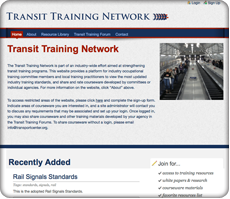Transit Workforce Center Resources and Best Practices for a Zero Emission-Workforce Fleet Transition Plan
https://www.transportcenter.org/zeb and https://www.transportcenter.org/solutions_services/detail_view/TWC
Disclaimer:
The contents of these webpages do not have the force and effect of law and are not meant to bind the public in any way. These webpages are intended only to provide clarity to the public regarding existing requirements under the law or agency policies. Grantees and subgrantees should refer to FTA’s statutes and regulations for applicable requirements. The United States Government and the Transit Workforce Center do not endorse any specific transit agency, organization, or manufacturer referenced in this document.
Introduction
Background
Under the Bipartisan Infrastructure Law, transit agencies using the expanded Low or No Emission Program or the Grants for Buses and Bus Facilities Competitive Program to purchase Zero Emission Bus (battery electric, hydrogen fuel cell, or rubber tire trolley buses powered by overhead catenaries) must submit a plan for implementing a transition to a Zero Emission Bus (ZEB) fleet. The Zero Emission Fleet Transition Plan includes six (6) required elements, including:
Element 6: Examine the impact of the transition on the applicant’s current workforce by identifying skill gaps, training needs, and retraining needs of the existing workers of the applicant to operate and maintain zero-emission vehicles and related infrastructure and avoid displacement of the existing workforce.
To assist agencies with an examination of the impact of transition to a zero emission fleet on the current workforce, the Federal Transit Administration (FTA) will be issuing information on a Zero Emission Fleet Transition Plan Element 6: Workforce Evaluation Tool. This tool is designed to aid applicants in drafting Element 6. In this tool agencies will find eight major questions that they are recommended to address (see Figure 1 below for a summary of the eight questions).
Figure 1. ZEB Workforce Transition Plan – Steps for Development

Benefits of an Effective Workforce Plan
The following best practices and resources are provided as a supplemental resource to the above-mentioned eight questions to aid agencies seeking to develop and implement a carefully planned joint labor-management workforce strategy for the transition to a zero-emission fleet in partnership with its workforce. Examples of best practices, lessons learned, and other resources are provided to help transit agencies examine and address their workforce needs and are not intended to be all-inclusive given the unique circumstances of that transit agencies face.
While particular agency circumstances will vary, an effective workforce development supports transit and all its stakeholders. Working under a comprehensive workforce development plan results in significant benefits, ensuring that:
- Workers have the necessary skills to make the changeover from more traditional buses, which they are familiar with, to ZEBs, which feature technologies and systems that may be new to them;
- Skills developed as part of the transition plan will help keep workers safe as they shift to these new technologies;
- Newly developed skills will allow the incumbent workforce to continue their careers and not be displaced;
- Labor and management work as a team to make the transition smooth and efficient;
- The agency has a skilled workforce that allows ZEBs to spend more time in revenue service carrying passengers and contributing to lowering greenhouse gas emissions;
- Monies are conserved through proper diagnosis, repair, and operation of the ZEB fleet; and
- Public investments in ZEBs are made wisely and without unnecessary waste.
About these Webpages
It is important to note that these webpages offer an initial set of building blocks for creating a comprehensive workforce development plan for ZEB transition, a plan that should cover all affected transit frontline workers. These webpages currently focus on preparation needed for the maintenance workforce. Some of the resources and best practices cover and apply to bus operators, but the next set of resources, currently under development, will focus on transitioning bus operators to ZEBs.
The materials here are intended to support agencies addressing the eight questions by providing general approaches and various forms of resources as they plan for workforce development in their transition to ZEBs. All elements contained here are part of a “living library” that will be supplemented with additional resources and best practices on an ongoing basis.
Use the links to the right to navigate to best practices and resources for each question. Some of the information may repeat under multiple questions. Resources are provided as embedded links in the Best Practice sections. An additional list of resources not referenced in the text is provided at the end of each question.
